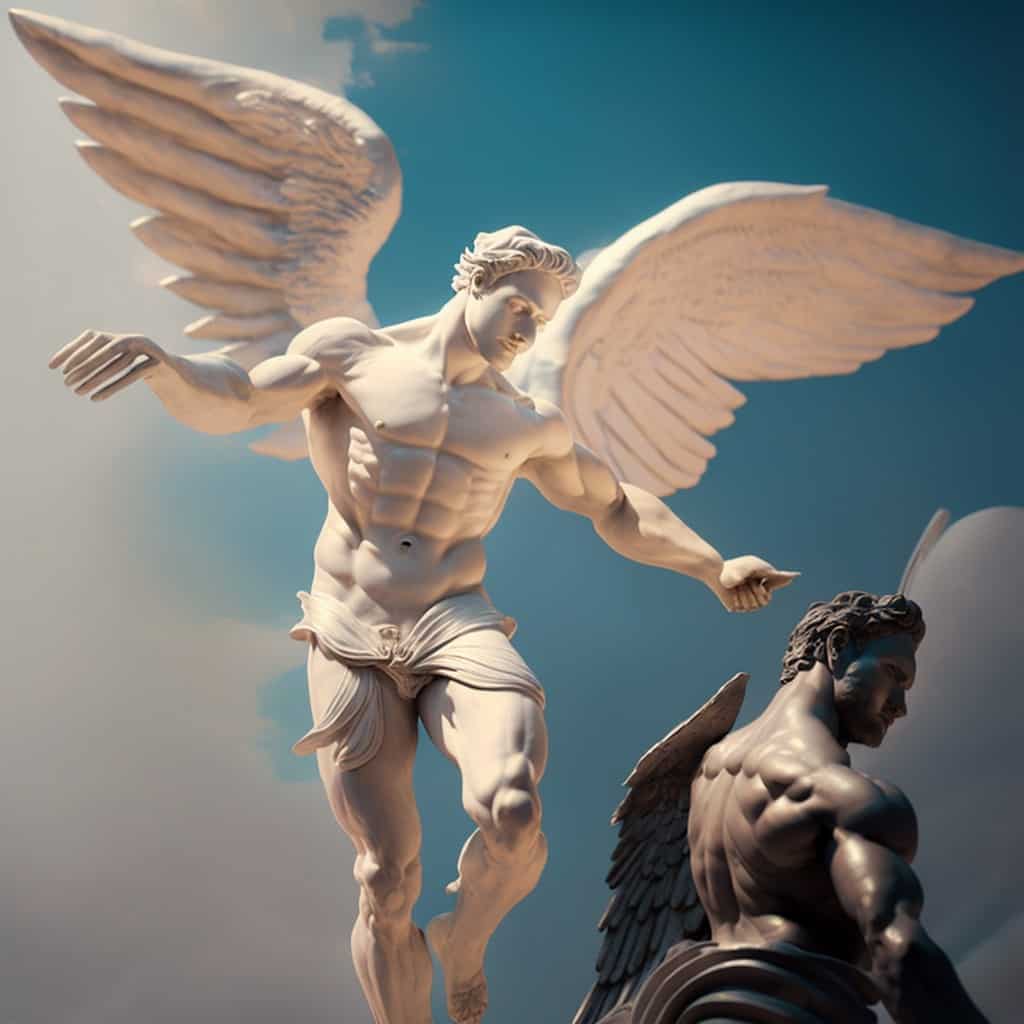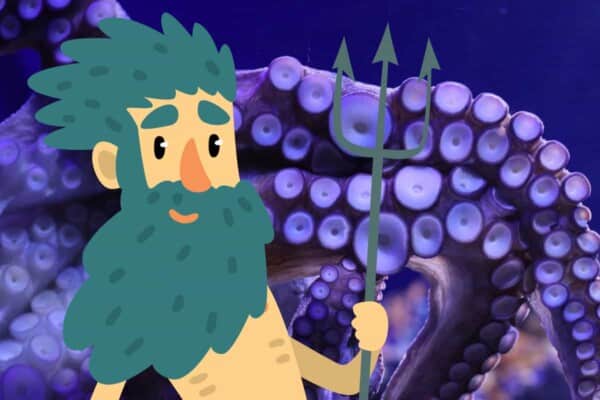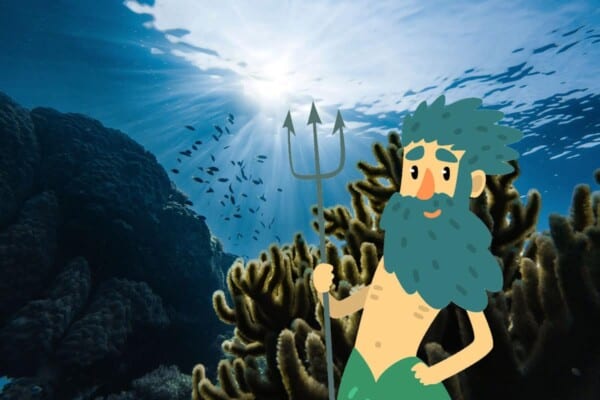The story of Icarus is by far one of the most famous tales you will ever find from the Greek mythos. The tale is meant to showcase the dangers of hubris and the inevitable fall of those that don’t heed to the warnings of the gods.
It also serves as a metaphor for man’s continuous quest to reach for the sky and surpass his limits by going above and beyond.
That is by far the most common interpretation of the story, but is that the only one out there? Not even close, in fact, there are dozens of possible explanations for it, and today we will be going over some of our personal favorites.
But before we can go over any of that, how about we give you a brief rundown of the story just in case you’re not familiar with the events in it.
Summary of the Myth of Icarus
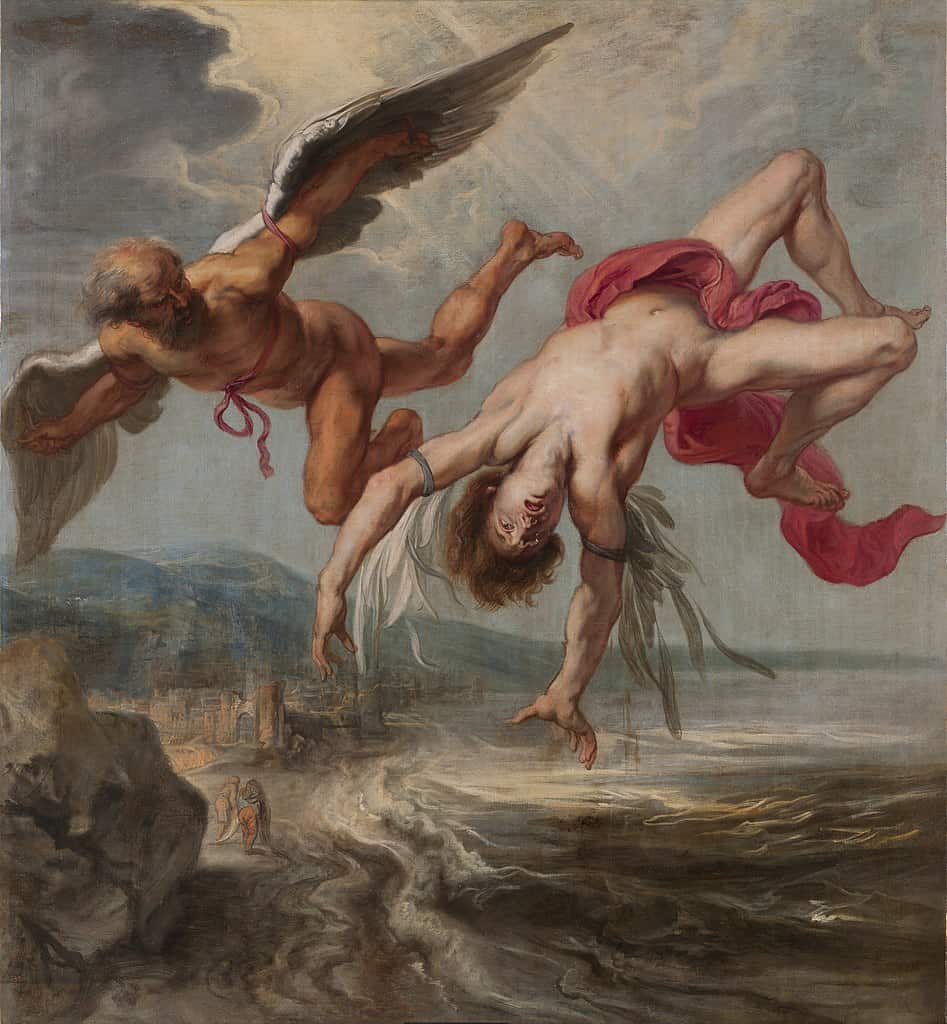
Icarus was the son of Daedalus, the person responsible for the building of the Labyrinth, the same labyrinth that can be found in the story of Theseus and the Minotaur.
In case you didn’t know by now, in that story Daedalus ended up helping Ariadne by telling her how Theseus could escape the Labyrinth.
King Minos was not very happy with this as he ended up locking Daedalus and his son Icarus in the maze as punishment.
Daedalus didn’t want to see his own flesh and blood rot in the maze for the rest of his life, so he decided instead to create a pair of wings out of feather and wax.
These wings were then given to his son and he was told to fly all the way off to the island of Crete. His father also fashioned his very own wax and feather wings to accompany his son.
The two ended up escaping together, but as they were flying up into the air, Daedalus noticed the fact that his son was flying a bit too close to the sun.
He urged his son to not go up any higher, but it was too late already as his son had gotten carried away and he started gliding higher and higher.
Before long the wax in his wings started to melt off and he fell straight to his death, drowning in the sea surrounding the Somos island. This sea would later on be named after him.
Daedalus eventually made his way to Cumae though and he ended up making it to Camicos on the isle of Sicily.
An In-Depth Look at This Famous Story
As you can probably tell from that rough description, it is believed that the story’s main theme is hubris, or the act of overreaching oneself.
Icarus could have just flown forwards and he would have been just fine, he would have reached his destination along with his father and the two could have lived their lives to the fullest together.
The problem with him though is that he decided to ignore his father’s warnings and instead he just went higher and higher in the hopes of reaching divinity.
He thought of himself as invincible the higher up he went, and this hubris became his downfall as before long he found himself plunging straight to his death.
W.H. Auden addressed this story back in 1938 in a poem that he titled “Musée des Beaux Arts”. Here is where he made the connection between the Icarus myth and the painting Landscape with the Fall of Icarus by Brueghel the Elder, showcasing the various different ways that he portrayed this story.
For example, he decided to paint the legs of Icarus in a very interesting way, showcasing them plummeting straight into the green water of the Aegean, almost completely pale white and fragile.
At the same time, you can also see a ploughman here carrying on with his business and a bizarrely expensive delicate ship which sails on as the event unfolds in front of our very own eyes.
This interpretation is unique in that it showcases the fact that the event wasn’t necessarily all about mankind’s hubris, but more so about how little importance we carry.
We are nothing but specs of dust on the side of the road, we will live and we will die completely unobserved and unremarked by any who witness our downfall.
At the same time, this interpretation may also represent man’s smallness and the dangers that come with the idea of reaching too far into divinity.
T.E. Hulme also states in his “Romanticism and Classicism” that any man can fly up into the sky, but at the same time, this same man must also come back down again which is the real tricky part.
In simple terms, the higher we are, the harder the fall we’ll eventually have will hurt, so you should never aim for the sky because the closer you get to it, the closer the ground will get to you.
But, the one question we still have to answer here is, how did Icarus die in the first place? Was it all caused by the fact that he flew too close to the sun? Well, this is a tricky question to answer because there are multiple versions of the same story out there.
On top of that, Icarus never actually existed, and if there was someone out there that tried to accomplish his feat in the past, let’s just say that the sun wasn’t the only reason as to why he fell to the ground.
Another interpretation we would like to cover for now comes from Palaephatus, an ancient Greek author that decided to give his own take to the classical myths in a work titled On Incredible Tales.
In his depiction, Palaephatus states that it wasn’t the sun that melted the wings, but instead it was the speed with which they flew through the air away from the Labyrinth.
The wings themselves are also meant to be a metaphor for a ship, as the two could have sailed off, trying to reach their destination.
At one point however, because of how much strain Icarus put on the ship trying to get to the Island of Crete, it capsized, and Icarus drowned in the process.
Daedalus survived on the other hand, and he made his way to Crete where he told the tale of his son, and how through his “hubris”, he ended up drowning in the sea even though the two would have made it to their destination if it weren’t for Icarus’s inability to follow his dad’s orders.
Another famous interpretation comes to us from Cleidemus and Diodorus, as the two tried to work together to bring forth a more logical explanation for the incident.
Diodorus believed that it was clear that Icarus died while disembarking from the boat that he took with his father. Because he didn’t heed his father’s warnings, he ended up jumping too soon off of the boat, and because he misjudged the wrath of the sea, he eventually drowned.
As you can probably tell by now, most of these interpretations are meant to follow the idea of euhemerism, which is when man seeks for a rational answer to well-known mythical tales.
In order to do this, some of the greatest philosophers at the time would come together as they tried to find reason where there was none as they applied the stories to real-life situations in order to explain them.
The story of Icarus isn’t the only one that was brought up for debate a lot by philosophers, take for example the story of the Golden Fleece.
In order to explain it, the philosophers came to the conclusion that there existed real practices in the past which involved panning for gold using wool alone.
Even so, while we can nitpick all we with, bringing meaning and rationality where there is none, the truth of the matter is that these new interpretations will never be as widely regarded as the original ones.
Most writers of the classical era for example decided to ignore all of these new interpretations in favor of the more familiar stories, stating that Icarus and Daedalus were mythological heroes and that thanks to Daedalus’ wits, the two definitely managed to fly out of the Labyrinth.
After they flew out onto the sea, Icarus did end up flying too close to the sun, which eventually melted the wax in his wings, leading to his untimely demise.
Ovid even recounts the tale of Icarus in his work “Metamorphoses”, where he pretty much dismisses all of the other interpretations altogether.
Interestingly enough though, plenty of experts have brought up the fact that flying is not considered to be a sin in the story, quite the contrary actually.
If flying was to be taken as the catalyst of Icarus’s demise, then his father Daedalus should have also passed away after taking flight, right?
But instead of that he made his way to the destination and even managed to live a long and prosperous life.
His son on the other hand paid the ultimate price for not listening to his father, and more importantly for doing what no man should ever do, aka he overreached himself, believing the fact that just because he could fly, he could get as close to the sun as he wanted to.
Randall Munroe from xkcd famously stated in an interview that what we should be taking from the story isn’t the fact that man should not crave for the sun, but that man should have been smarter than to use wax as an adhesive in the first place.
This funny and quite ironic take has been echoed ever since, with experts stating that it wasn’t Icarus’s inability to hold himself together in the face of divinity, but quite the contrary, that it was their inability to think of a better way out of the Labyrinth that him to plunge.
Ancient Artworks Depicting the Tale of Icarus
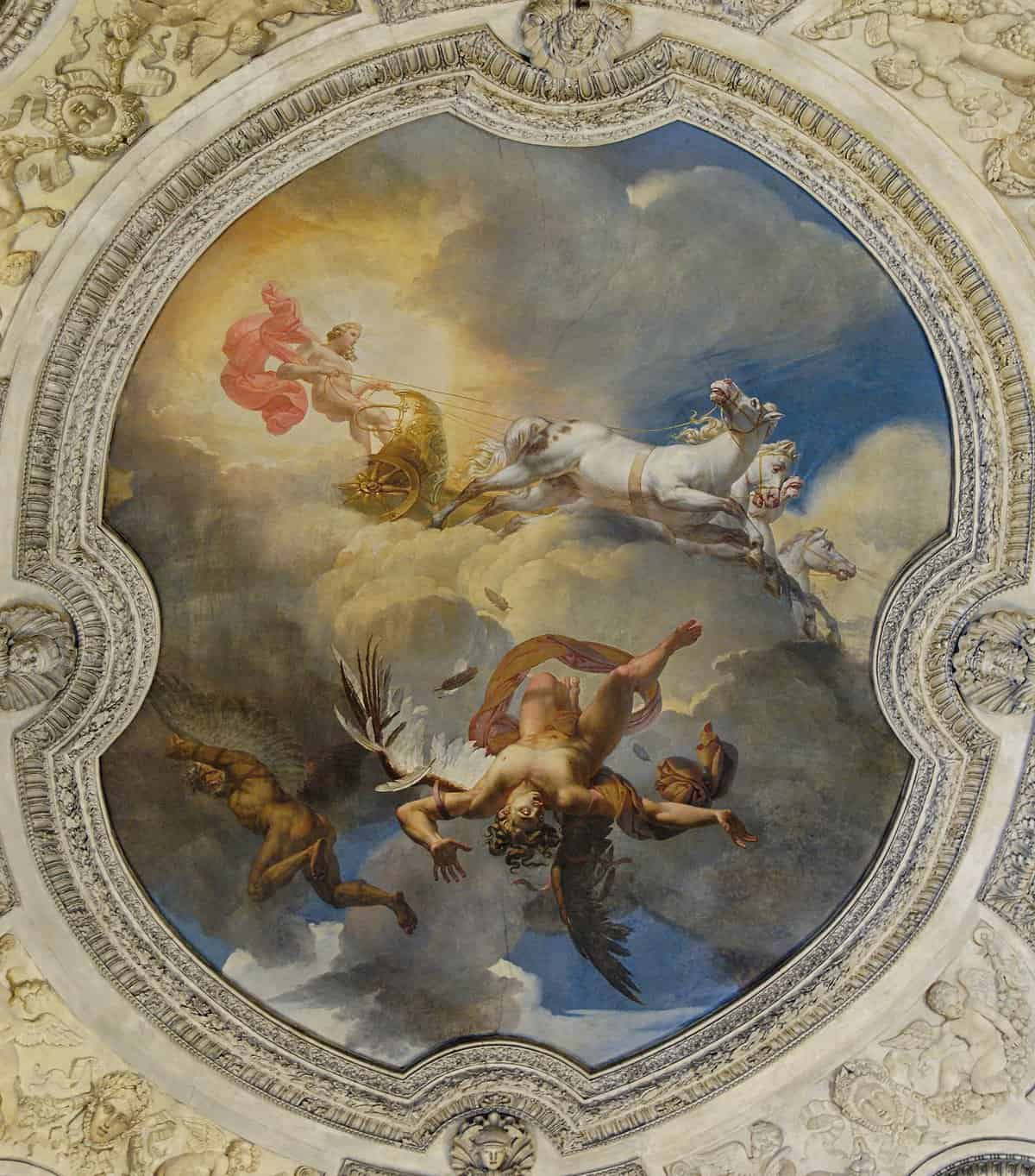
Considering the fact that the tale of Icarus is one of the most popular stories to ever come out of ancient Greece, it’s no wonder that there are more than a hundred different ancient artistic images portraying it out there.
Most of the time, Daedalus is portrayed completely surrounded by his tools, as he would always be working on something new, showcasing just how brilliant of a crafter he was.
In some cases however, he is also portrayed making the wings for himself and his son, which does carry a bit of an ominous connotation, considering the fact that this decision would eventually lead to Icarus’s demise.

In other cases though, you can also see him fastening the wings to Icarus and let’s not forget about the many different interpretations which showcase Icarus plunging to his death.
By far the oldest Greek artistic interpretation of Icarus comes to us from a fragment of black-figure Athenian pottery which is believed to have sprung up around 560 BC.
In that portrayal you can clearly see the lower half of a human with winged footgear. This is believed to be a direct representation of Icarus as he got ready to set off into the sun.
Another interesting portrayal was discovered on a fragment of a red-figure which is believed to have been painted in 420BC. In this one you can see Daedalus putting the wings on his son. In a fifth century BC vase you can see Icarus falling into the sea.
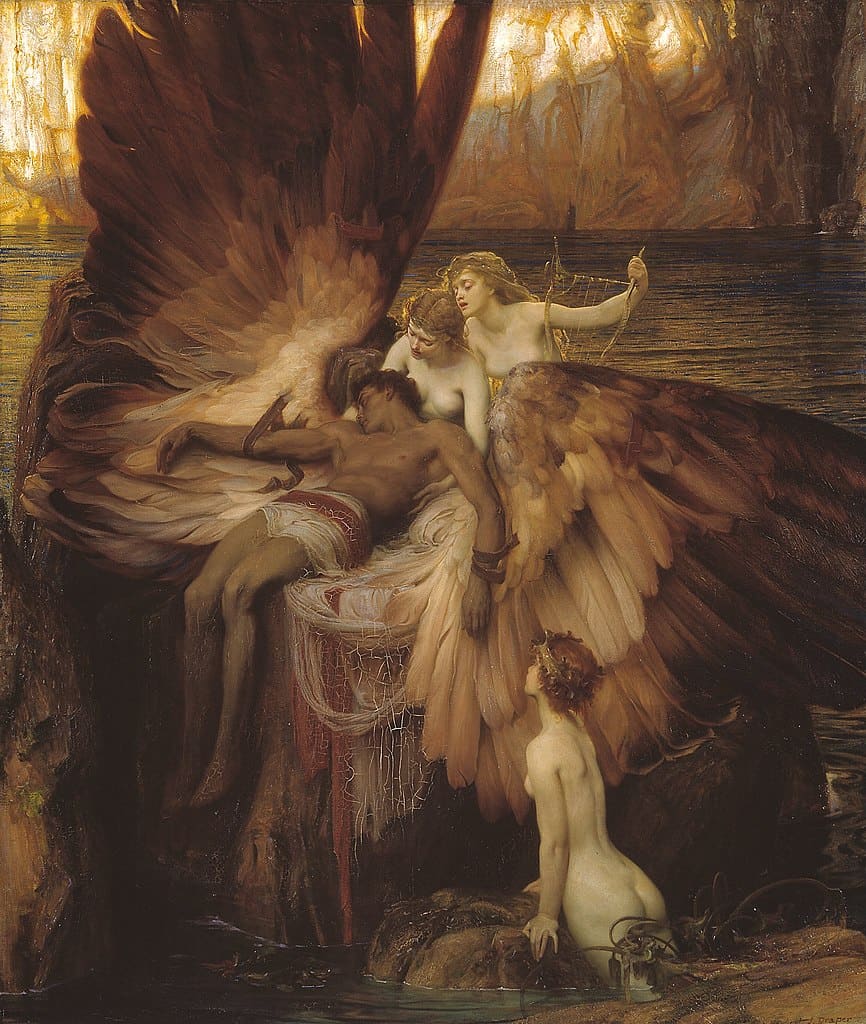
Last but not least we would like to mention a very important image of Daedalus that has been found on a fragment of a fine red-figure vase that is believed to have been the product of the Black Fury Group around 390 BC.
On this fragment you can clearly see Daedalus carrying his dead son to shore, showcasing that he tried his hardest to save him but, in the end, he failed.
Interestingly enough, the tale of Icarus was also wildly popular around Ancient Rome, as we have discovered plenty of illustrations of the tragic myth carved out on gems, molded clay lamps, bronze figurines and even on painted frescoes.
We even came across several astonishing murals in the ancient ruins of Pompeii and Herculean which showcase the death of Icarus, with his father looking over him as he notices that his son has been lost to the sea.
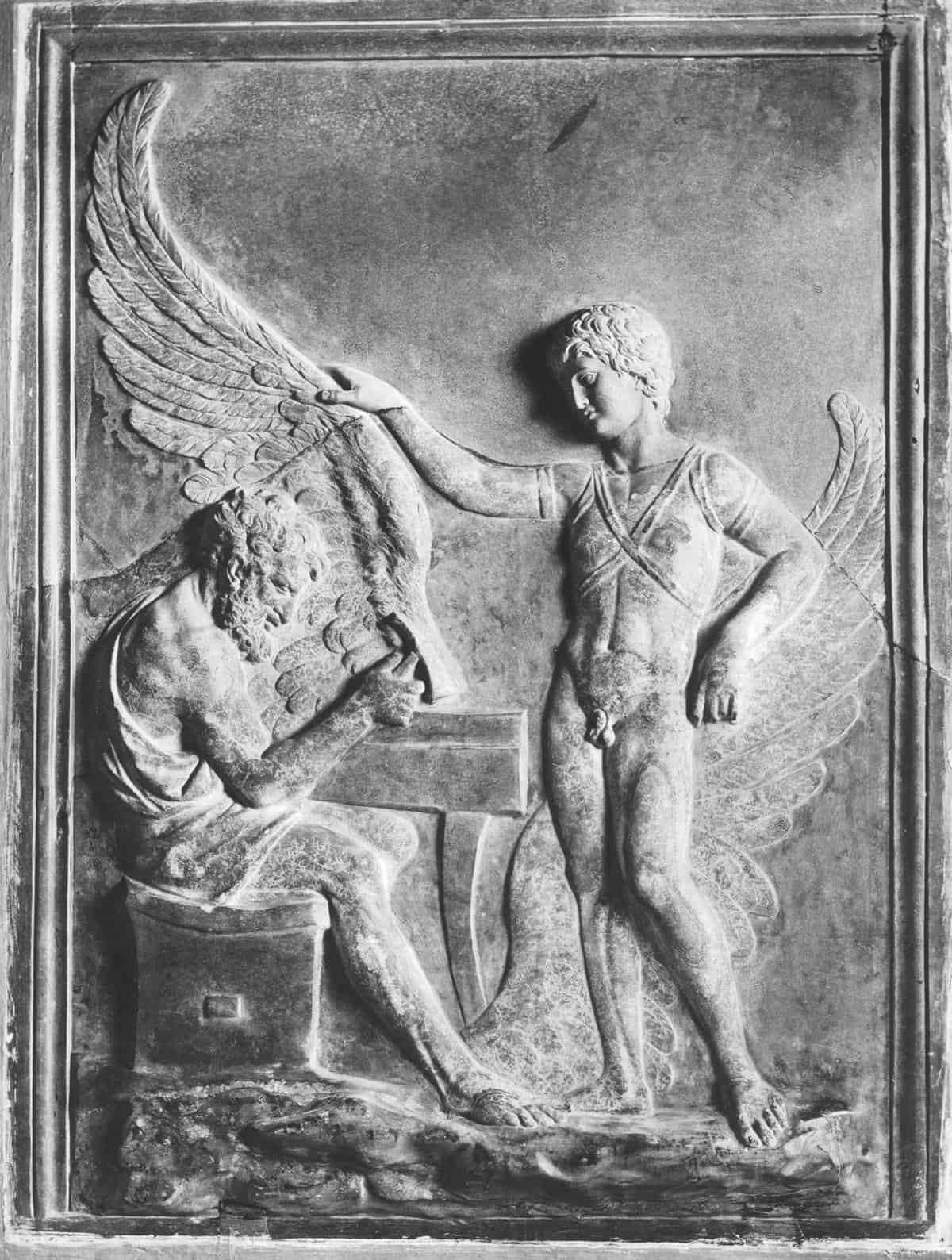
The Roman texts at the time also brought forth a new interpretation to the age-old tale, as they believed that this story was a perfect merger of optimism and despair, making it the perfect allegory for the Middle Ages.
While for us the story has been repeated to death by now becoming quite a cliché, back then it was an incredible metaphor for how we as humans can think of ourselves as gods thanks to our technology.
The myth is also believed to be a warning sign for anyone that wishes to exceed human bounds as only ruin will come out of overreaching oneself.
Conclusion
The story of Icarus and his downfall will forever be remembered as one of the most intense and tragic tales to have ever come out of Ancient Greece.
There is nothing quite like it for that time period, so even though it may seem a bit strange that it was regarded as such a masterpiece back then, it shouldn’t come off as a surprise that it has survived for so long, becoming one of the oldest and most beloved tales of all time.
Regardless of what interpretation you prefer and whether you want to think that everything in this story is a metaphor and that it actually did take place in real life or not, we can all come together and agree over the fact that this is one amazing story that we will not forget anytime soon.


